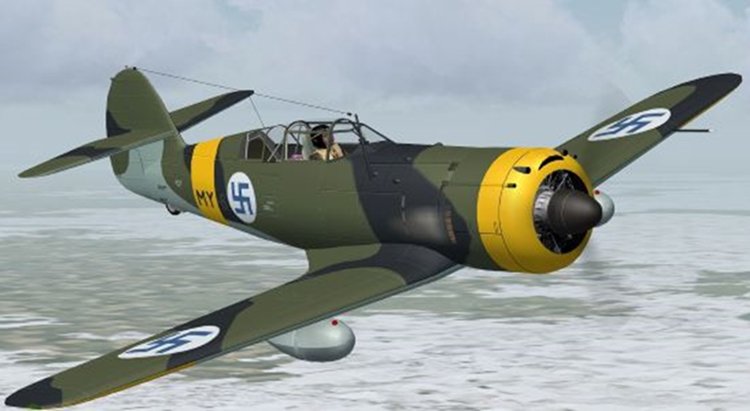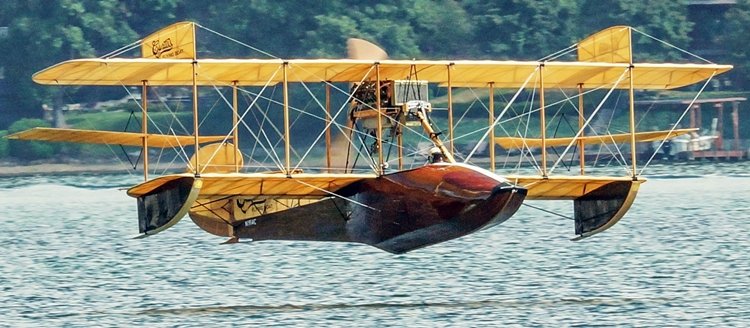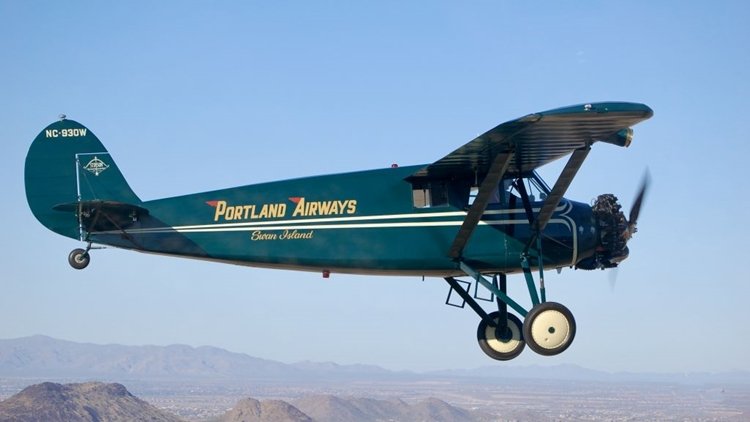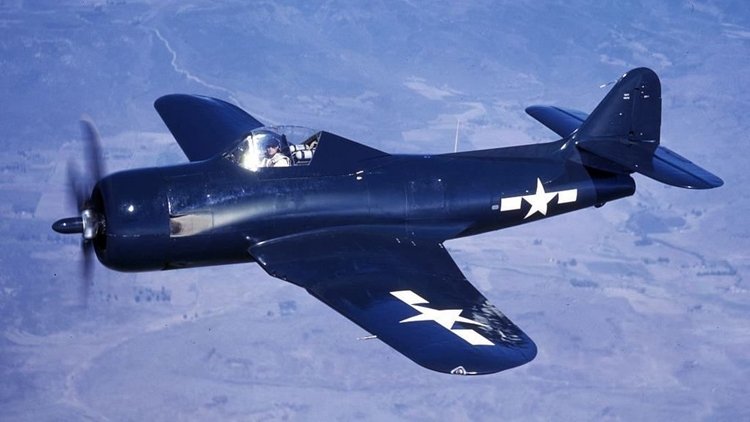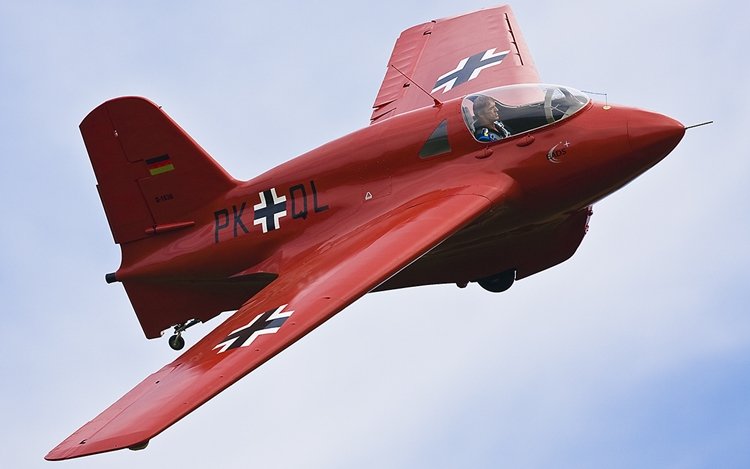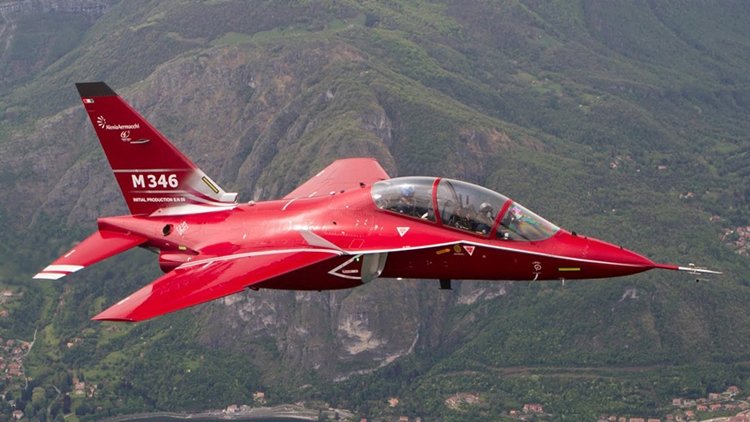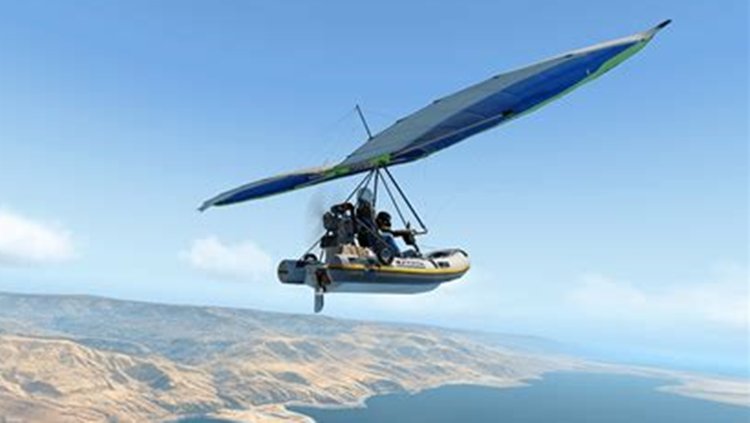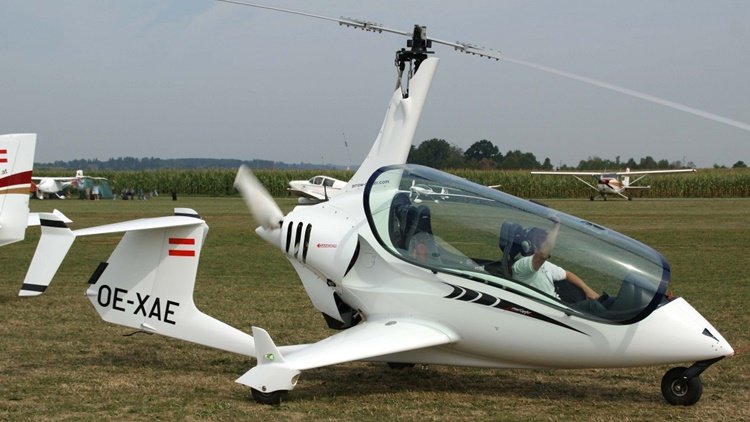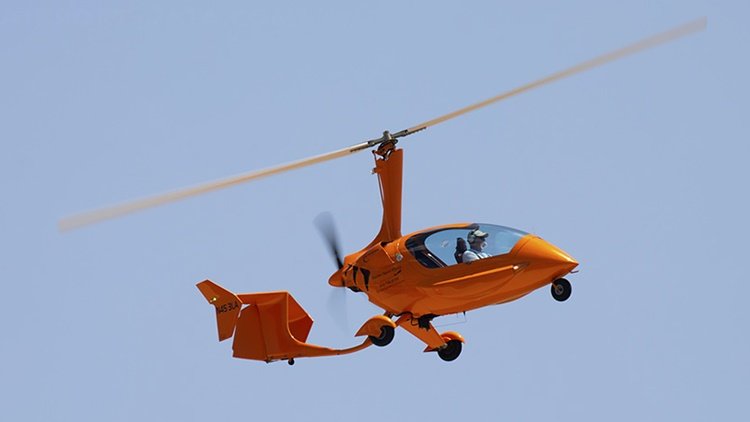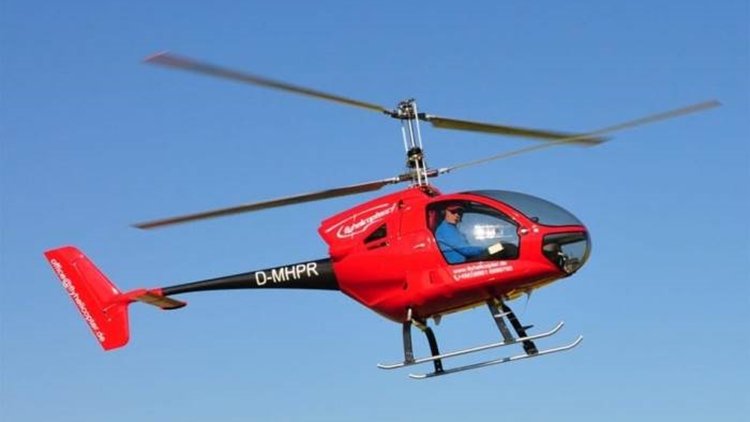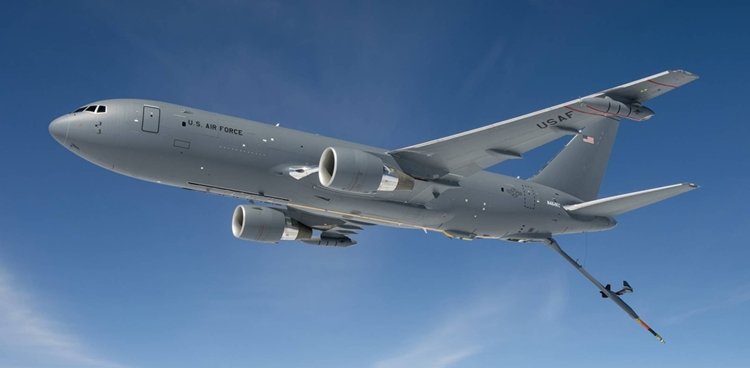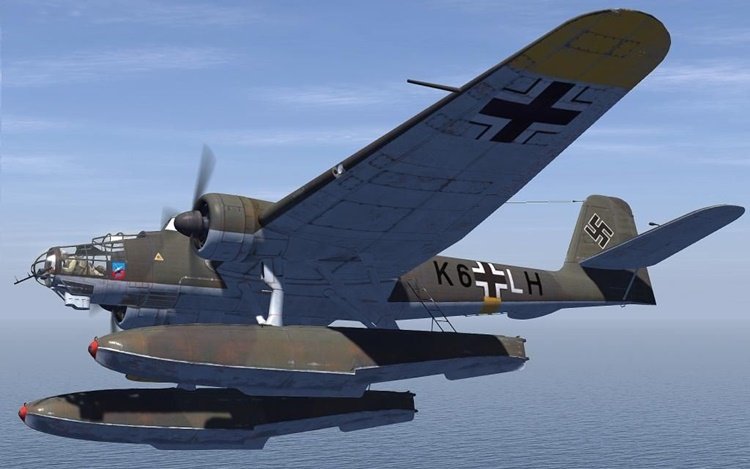-
Posts
7,796 -
Joined
-
Last visited
-
Days Won
68
Content Type
Profiles
Forums
Gallery
Downloads
Blogs
Events
Store
Aircraft
Resources
Tutorials
Articles
Classifieds
Movies
Books
Community Map
Quizzes
Videos Directory
Everything posted by red750
-
NNo explanation of the kangaroo or red tail with photo.
-
The VL Myrsky ("Storm") is a Finnish World War II fighter aircraft originally developed by Valtion lentokonetehdas for the Finnish Air Force. The models of the aircraft were Myrsky I, Myrsky II, and Myrsky III. It was designed by Edward Wegelius, Martti Vainio and Torsti Verkkola who worked at Valtion lentokonetehdas. The decision to start developing a new fighter for the Finnish Air Force was based on experience gained before the Winter War: in the "arms race" leading up to a war, smaller nations can have difficulty purchasing top-of-the-line fighters without a significant political cost. The Finnish Air Force requested preliminary proposals for a domestic fighter from State Aircraft Factory (Valtion Lentokonetehdas) in early 1939, before the Winter War. State Aircraft Factory prepared five alternative proposals by May 1939. After that, The Ministry of Defence ordered the fighter design from State Aircraft Factory in June 1939. The preliminary design was made by the aircraft-designer trio Arvo Ylinen (head of the design-bureau), Martti Vainio (aerodynamics), and Torsti Verkkola (structural design). Edward Wegelius was appointed head of the design department of the State Aircraft Factory when Ylinen later moved on to the Helsinki University of Technology in August 1940. VL did not appoint any main constructor to its products, such as the German aircraft manufacturers did. Due to difficulties obtaining duraluminium, the wings were made out of plywood and the fuselage was metal structure with a fabric and plywood skin. The planned Bristol Taurus III engine was not available due to war, so a Pratt & Whitney R-1830 (civil Twin Wasp) was chosen. Availability of this engine was also problematic, so the first prototype used an R-1830-S3C3-G, while later prototypes and production fighters used less-powerful SC3-Gs. Finland bought these engines from German war booty stocks. The first Myrsky prototype flew on 23 December 1941. The prototype was fully functional, but too heavy. After some modifications they soon had three new prototype aircraft. The test flights showed some structural problems during high-speed tests. All three prototypes were destroyed during test flights; two test pilots died, one was seriously injured. The culprit was found to be aeroelastic flutter, which was a poorly known phenomenon at the time. Resolving the flutter problem took almost a year. Series production started in autumn 1942 far before German deliveries of Messerschmitt Bf 109 had begun in 1943. The series production version was called the Myrsky II. 47 Myrsky IIs were built and together with the Myrsky I version and Myrsky prototype the production amounted to 51 in all. Although the aircraft met the specifications set for it, it did not fulfill all expectations due to structural problems. or operational history, click here. The Myrsky III was ordered in spring 1943, but none were built. Variants Myrsky Prototype, 1 built Myrsky I Preproduction aircraft, 3 built Myrsky II (Specifications below) Series-production aircraft, 47 built Myrsky III 10 being built but cancelled
-
(No to be confused with the Curtiss SOC Seagull of WW2) The Curtiss Seagull was a civil variant of the Curtiss MF flying boat trainer produced from 1918, the civil aircraft having a 119 kw (160 hp) Curtiss C.6 six-cylinder in-line engine in place of the V-8 unit in the military variants. The MF was one of a long line of flying boats produced for the US services following the entry of the United States into World War I, when flying boats were required for patrolling coastal waters to prevent German submarine operations. Two examples of the Seagull came to Australia. Seagull G-AUCV (c/ n MF.419/28) was registered in 1921. It left Double Bay, Sydney, NSW on 13 March 1921 and made an epic flight to and from Tasmania, this being described as the First Aerial Reconnaissance in Australia, the pilot being Capt Andrew Lang(said to be shot down by the Red Baron during World War I, the operation being financed and promoted by Lebbeus Hordern. Cameras were carried on board in order that aerial photographs could be taken of the coastline. The auxiliary yacht ‘Acielle’ accompanied the expedition and acted as a tender for the Seagull. The flight was made in short stages, the first night being at the Shoalhaven River, near Nowra, NSW, thence to Jervis Bay, Moruya, down the coast to Eden and Marlo where the Victorian Premier, Mr Lawson, was met. Later he was taken for a flight over the area. Stops were made and local flights were made with passengers. From Welshpool it flew to Lady Barren and then across the Tasman, landing on the Tamar River close to Cataract Gorge. The return flight commenced on 19 June and the aircraft arrived at Double Bay on 4 July 1921. The bottom photo below shows the aircraft on the Tamar River. For more details of these aircraft click here.
-
The Stinson Junior was a high-winged American monoplane of the late 1920s, built for private owners, and was one of the first such designs to feature a fully enclosed cabin. Stinson Aircraft had introduced their large high-winged six-seat SM-1 Detroiter in 1927. The SM-1 was sold successfully to airlines and other commercial operators, but it was too large to appeal to private owners. Stinson therefore redesigned the aircraft with shorter span wings, shorter fuselage and a choice of less powerful engines as the SM-2 Junior. The aircraft was a strut-braced high-wing monoplane with a sturdy outrigger undercarriage which was braced against the wing support struts and the initial 110 h.p. Warner Scarab engine was normally left uncowled. The first SM-2 flew in mid-1928 and deliveries commenced that year. Later versions of the SM-2 had higher-powered engines of between 165 h.p. and 225 h.p. The design was further developed to produce the more powerful and heavier SM-7 and SM-8 models which were full four-seaters and these were also used by commercial firms. The Junior R of 1932 had a deeper fuselage and a low-set stub wing to mount the undercarriage and wing struts. The various Stinson Junior models were in production between 1928 and 1933, being bought by both wealthy private flyers and commercial enterprises. A total of 321 Juniors were built, of which 27 survived in 2001 and several of these were airworthy in private hands. In 1977, the Experimental Aircraft Association painted an SM-8A "Spirit of EAA", and flew a cross-country tour as the support plane with a "spirit of St. Louis" replica as part of the 50th anniversary of Lindbergh's Trans-Atlantic crossing. Variants SM-2 Warner Scarab 110 h.p. SM-2AA Wright J6-5 165 h.p. SM-2AB Wright J5 220 h.p. SM-2AC (Specifications below) Wright J6-7 225 h.p. SM-2ACS floatplane version of the SM-2AC SM-7A Wright J6-9 300 h.p. SM-7B Wasp Junior 300 h.p. SM-8A Lycoming R-680 215 h.p. SM-8B Wright J6-7 225 h.p. SM-8D Packard DR-980 diesel 225 h.p. Junior R Lycoming R-680 215 h.p. and deeper fuselage. 28 Units built Junior R-2 Lycomong R-680-BA 240 h.p. 3 Built. Junior R-3 as R-2 with retractable undercarriage 3 Units built.[5] Junior R-3-S Lycoming R-680-6 245 h.p. Junior S Lycoming R-680 215 h.p. with fully cowled engine Junior W generally similar to the SM-7B, powered by a Wasp Junior engine
-
The Ryan FR Fireball was an American mixed-power (piston and jet-powered) fighter aircraft designed by Ryan Aeronautical for the United States Navy during World War II. It was the Navy's first aircraft with a jet engine. Only 66 aircraft were built before Japan surrendered in August 1945. The FR-1 Fireball equipped a single squadron before the war's end, but did not see combat. The aircraft ultimately proved to lack the structural strength required for operations aboard aircraft carriers and was withdrawn in mid-1947. Design of the FR-1 began in 1943 to a proposal instigated by Admiral John S. McCain Sr. for a mixed-powered fighter because early jet engines had sluggish acceleration that was considered unsafe and unsuitable for carrier operations. Ryan received a contract for three XFR-1 prototypes and one static test airframe on 11 February 1943 with the first two prototypes delivered in 14 months. Another contract was placed for 100 aircraft on 2 December 1943 and a later contract on 31 January 1945 increased the total of FR-1s on order to 700. The XFR-1 was a single-seat, low-wing monoplane with tricycle landing gear. A 1,350-horsepower (1,010 kW) Wright R-1820-72W Cyclone radial engine was mounted in the fighter's nose while a 1,600 lbf (7,100 N) General Electric I-16 (later redesignated as the J-31) turbojet was mounted in the rear fuselage. It was fed by ducts in each wing root which meant that the wing had to be relatively thick to house the ducts and the outward-retracting main landing gear. To simplify the fuel system, both engines used the same grade of avgas. Two self-sealing fuel tanks were housed in the fuselage, one of 130 US gallons (490 L; 110 imp gal) and the other of 50 US gallons (190 L; 42 imp gal). The cockpit was positioned just forward of the leading edge of the wing and the pilot was provided with a bubble canopy which gave him excellent visibility. The XFR-1 had the first laminar flow airfoil in a navy carrier aircraft. The Fireball was armed with four .50 in (12.7 mm) M2 Browning machine guns with 300 rounds per gun. They were mounted in the center section of the wing, immediately outboard of the air intakes for the jet engine. Four 5-inch (127 mm) rockets could be carried under each outer wing panel and two hardpoints were provided under the center section for 1,000 lb (454 kg) bombs or 100 US gal (380 L; 83 imp gal) drop tanks. Armor plates were provided in front and behind the pilot's seat and for the oil cooler. For more details of design, development and operational history, click here. Variants XFR-1 Military designation of the prototype Model 28 aircraft, three built. FR-1 Fireball Single-seat fighter aircraft, 66 built. (Specifications below) FR-2 Conversion with a Wright R-1820-74W replacing earlier piston engine, one aircraft modified. FR-3 Proposed variant with a General Electric I-20 replacing earlier jet engine; never built. XFR-4 Variant with Westinghouse J34; one built.[7]J34-WE-12.
-
Thank you F.V.
-
This is the photo I referred to in the opening post. Does anyone on this site own or have owned this aircraft?
-
Thank you.
-
Thanks for that. The photo was that of an Australiann Lightwing Ga-55. There is nothing on the Hughes Engineering website more recently that 2021. Have they gone out of business?
-
I was going through some of my photos and I came across one that had a 2-3 format rego, rather than the normal 2-4 format. Can a rego of, say, 25-0999 be shown on the aircaft as 25-999? In other words, can the 0 in that location be dropped? (Note, that's not the real number in question.)
-
The Messerschmitt Me 163 Komet is a rocket-powered interceptor aircraft primarily designed and produced by the German aircraft manufacturer Messerschmitt. It is the only operational rocket-powered fighter aircraft in history as well as the first piloted aircraft of any type to exceed 1,000 kilometres per hour (620 mph) in level flight. Aproximately 370 units were produced. Development of what would become the Me 163 can be traced back to 1937 and the work of the German aeronautical engineer Alexander Lippisch and the Deutsche Forschungsanstalt für Segelflug (DFS). Initially an experimental programme that drew upon traditional glider designs while integrating various new innovations such as the rocket engine, the development ran into organisational issues until Lippisch and his team were transferred to Messerschmitt in January 1939. Plans for a propeller-powered intermediary aircraft were quickly dropped in favour of proceeding directly to rocket propulsion. On 1 September 1941, the prototype performed its maiden flight, quickly demonstrating its unprecedented performance and the qualities of its design. Having been suitably impressed, Nazi officials quickly enacted plans that aimed for the widespread introduction of Me 163 point-defence interceptors across Germany. During December 1941, work began on the upgraded Me 163B, which was optimized for large-scale production. During early July 1944, German test pilot Heini Dittmar reached 1,130 km/h (700 mph), an unofficial flight airspeed record that remained unmatched by turbojet-powered aircraft until 1953. That same year, the Me 163 began flying operational missions, being typically used to defend against incoming enemy bombing raids. As part of their alliance with Empire of Japan, Germany provided design schematics and a single Me 163 to the country; this led to the development of the Mitsubishi J8M. By the end of the conflict, roughly 370 Komets had been completed, most of which were being used operationally. Some of the aircraft's shortcomings were never addressed, and was less effective in combat than predicted. Capable of a maximum of 7.5 minutes of powered flight, its range fell short of projections and greatly limited its potential. Efforts to improve the aircraft were made (most notably the development of the Messerschmitt Me 263), but many of these did not see actual combat due to the sustained advancement of the Allied powers into Germany in 1945. For a dedicated interceptor aircraft that achieved operational status, the track record of the Me 163 is somewhat underwhelming, having been credited with the destruction of between nine and 18 Allied aircraft against ten losses. Aside from the actual combat losses incurred, numerous Me 163 pilots had been killed during testing and training flights. This high loss rate was, at least partially, a result of the later models' use of rocket propellant, which was not only highly volatile but also corrosive and hazardous to humans. One noteworthy fatality was that of Josef Pöhs, a German fighter ace and Oberleutnant in the Luftwaffe, who was killed in 1943 through exposure to T-Stoff in combination with injuries sustained during a failed takeoff that ruptured a fuel line. Besides Nazi Germany, no nation has ever made operational use of either the Me 163 specifically, or rocket planes in general. A few captured Me 163s were flown for evaluation and research purposes. Australia Me 163B, Werknummer 191907 was part of JG 400, captured at Husum and was shipped to the RAE. It was allocated the RAF Air Ministry number of AM222 and was dispatched from Farnborough to No. 6 MU, RAF Brize Norton, on 8 August 1945. On 21 March 1946, it was recorded in the Census of No. 6 MU, and allocated to No. 76 MU (Wroughton) on 30 April 1946 for shipment to Australia. For many years this aircraft was displayed at RAAF Williams Point Cook, but in 1986, the Me 163 was transferred to The Australian War Memorial for refurbishment. It was stored at the AWM Treloar Technology Annex Mitchell, refurbished and reassembled, and was later put up for display together with a Messerschmitt Me 262A-2a, Werknummer 500200 (AM81). For details of the development, operational history and models of the Me-163, click here.
-
The Sud-Ouest SO.6000 Triton was an early experimental French jet aircraft. It has the distinction of being the first indigenously-designed jet-powered aircraft to be flown by the nation, having been designed and manufactured during the 1940s by the French aircraft construction consortium SNCASO. Work on the French jet aircraft initiative had begun in secret during the Second World War, and harnessed research retrieved from Nazi Germany. Almost immediately after the end of the conflict, the French government issued a requirement for a batch of five prototype jet aircraft to be developed by French industry. To avoid delaying the overall project, it was decided to use the German-designed Junkers Jumo 004-B2 engine after severe development issues were encountered with the indigenously-developed Rateau-Anxionnaz GTS-65 turbojet engine. The British Rolls-Royce Nene turbojet engine was also adopted for some of the prototypes. On 11 November 1946, the first prototype performed its maiden flight, flown by test pilot Daniel Rastel. This feat was viewed by the government as being an important, and public, advancement in the capabilities of French industry and military capability. A total of five aircraft were produced for the test programme, including one for static testing only. Despite multiple aircraft been built and successfully flown, further development of the SO.6000 was abandoned following the rapid emergence of more advanced jet-powered fighter aircraft.
-
The Grumman XF10F Jaguar was a prototype swing-wing fighter aircraft offered to the United States Navy in the early 1950s. Although it never entered service, its research paved the way toward the later General Dynamics F-111 and Grumman's own F-14 Tomcat.
-
Keep on goin'. Might stop at 2000.
-
I have just completed the 1600th profile in the Aircraft profiles section. About a dozen have been completed by other contributors, particularly Old Man Emu, but I'm not scrolling through 1600 to count them. I've given up on trying to total the view counts manually, they will change before I finished. We'll have to get a computer to do it for us.
-
The Aermacchi M-346 Master is a family of military twin-engine transonic advanced jet trainers and light combat aircraft. Originally co-developed with Yakovlev as the Yak/AEM-130, the partnership was dissolved in 2000 and then Alenia Aermacchi proceeded to separately develop the M-346 Master, while Yakolev continued work on the Yakovlev Yak-130. The first flight of the M-346 was performed in 2004. The type is currently operated by the air forces of Italy, Israel, Singapore, Greece, Turkmenistan and Poland. Since 2016 the manufacturer became Leonardo-Finmeccanica as Alenia Aermacchi merged into the new Finmeccanica, finally rebranded as Leonardo in 2017. The M-346 is designed for the main role of lead-in fighter trainer, in which aircraft's performance and capabilities are used to deliver pilot training for the latest generation of combat fighter aircraft. Powered by a pair of Honeywell F124 turbofan dry engines, designed to reduce acquisition and operating costs, it is capable of transonic flight without using an afterburner; Alenia Aermacchi has claimed that the M-346's flight performance to be "second only to afterburner-equipped aircraft". During the design process, the twin concepts of "design-to-cost" and "design-to-maintain" were adhered to, reducing acquisition and operational costs; the per flying hour costs of the M346 are reportedly one-tenth of those of the Eurofighter Typhoon. Outside of the training role, the M-346 was designed from the onset to accommodate additional operational capabilities, including combat missions such as close air support and air policing duties. The combat capable M-346FA can perform ground attack, homeland defence and air policing missions and reconnaissance. Various munitions and stores can be carried, including IRIS-T or AIM-9 Sidewinder air-to-air missiles, various air-to-surface missiles, anti-ship missiles, free-fall and laser-guided bombs and rockets, a 12.7 mm gun pod, reconnaissance and targeting pods, and electronic warfare pods; weapon aiming is performed using the Helmet Mounted Display and the multifunction displays. All main systems are duplicated, and the flight system reconfigurable, to increase survivability and functionality in the event of battle damage being sustained.[28] The aircraft has a maximum range of 1,375 nautical miles when outfitted with a maximum of three external fuel tanks, this can be extended via in-flight refuelling via a removable refuelling probe. For more details of the design and operational history of the M-346, click here. Variants M-346 Designation for the basic type. T-346A Italian military designation from 2012 for the M-346. M-346LCA (Light Combat Aircraft) Armed variant offered to Poland as a replacement for aging Su-22. Designation no longer in use. M-346FT (Fighter Trainer) Multirole variant capable of switching between training and combat operations. New features include a new tactical datalink system and different armament capability, but do not include physical changes to the hardware. M-346FA (Fighter Attack) Multirole variant capable of air-to-air and air-to-surface combat with a 3 tonne payload spread over 7 hardpoints, advanced Grifo-M346 radar radar, countermeasures and stealth features including engine intake grids and radar-absorbing coatings on the canopy and wing leading edge. It is being marketed as a light attack aircraft also suitable for aggressor and companion training purposes. The aircraft was revealed on June 18, 2017, in a static display at that year's Paris Air Show. The aircraft is being marketed for export to South American and East Asian countries, and is claimed to be able to carry out operational missions at far lower costs than those of front-line fighters. T-100 Designation used for the United States Air Force's T-X program.
-
The Polaris FIB ("Flying Inflatable Boat") is an Italian flying boat ultralight trike, that was designed and produced by Polaris Motor of Gubbio. The aircraft was introduced in the mid-1980s and remained in production until about 2014. It was supplied as a complete ready-to-fly-aircraft. It is now produced by New Polaris 2020 S.L. of Tenerife, Canary Islands, Spain. The FIB complies with the Fédération Aéronautique Internationale microlight category, including the category's maximum gross weight of 450 kg (992 lb). The FIB has a maximum gross weight of 406 kg (895 lb). The aircraft features a cable-braced hang glider-style high-wing, weight-shift controls, a two-seats-in-tandem open cockpit, an inflatable boat hull and a single engine in pusher configuration. The FIB has no wheeled landing gear, but as a result of customer demand it was later developed into the amphibious Polaris AM-FIB. The FIB's single surface wing is made from bolted-together aluminum tubing and covered in Dacron sailcloth. The 11.15 m (36.6 ft) span wing is supported by a single tube-type kingpost and uses an "A" frame weight-shift control bar. The powerplant is a twin cylinder, liquid-cooled, two-stroke, dual-ignition 64 hp (48 kW) Rotax 582 engine. The aircraft has an empty weight of 216 kg (476 lb) and a gross weight of 406 kg (895 lb), giving a useful load of 190 kg (419 lb). With full fuel of 40 litres (8.8 imp gal; 11 US gal) the payload is 161 kg (355 lb). The company continued to develop the design and in 2010 introduced a new hull shape to increase performance in the water and in the air. Dimitri Delemarie, writing in The World Directory of Leisure Aviation 2011-12, said of the design, "It will never win any speed records, but if there were an award for fun, it would be right up there at the top." The FIB is used by a number of government operators, including police and coastguards. In the early 2000s the company offered a version with the same wing, but without a boat hull, using a conventional minimalist trike frame mounted on wheeled landing gear or optionally skis. Even though it did not have a boat hull it was still marketed under the FIB name.
-
The ArrowCopter is a series of Austrian autogyros, designed and produced by FD-Composites GmbH of Zeillern. When it was in production the ArrowCopter AC20 series was supplied as complete, factory built, ready-to-fly-aircraft. By the summer of 2018 the company website had been removed and the company had filed for insolvency protection. In October 2019 the Sichuan Dahua General Aircraft Manufacturing Company of China purchased the assets of the company. The ArrowCopter was designed to comply with British BCAR Section T rules. It features a single main rotor, a two-seats in tandem configuration enclosed cockpit with a bubble canopy, stub wings, tricycle landing gear and a four-cylinder, liquid and air-cooled, four-stroke, dual-ignition turbocharged 115 hp (86 kW) Rotax 914 engine in pusher configuration. The 100 hp (75 kW) normally aspirated Rotax 912S and a 118 hp (88 kW) BMW boxer engine with a reduction drive were reported as being under consideration in 2011 as alternate powerplants. The aircraft fuselage is made from an autoclave-cured carbon fibre/kevlar sandwich and mounts an 8.50 m (27.9 ft) diameter rotor. The main landing gear wheels are mounted on the tips of the short wings. The AC 10 has an empty weight of 250 kg (550 lb) and a gross weight of 450 kg (990 lb), giving a useful load of 200 kg (440 lb). The AC 10 flew for the first time on 20 November 2008 and the first production examples appeared in 2011. Production of the AC 20 began in 2012. By 2015 at least 40 aircraft had been produced, going to customers in nine countries. In September 2018, FD-Composites GmbH filed for insolvency protection due to management and financial issues. In October 2019 the Sichuan Dahua General Aircraft Manufacturing Company of China completed the purchase of ArrowCopter's assets. Sichuan Dahua indicated that they intended to retain manufacturing in Austria and set up parallel manufacturing in China. Variants FD-Composites ArrowCopter AC10 Initial version with a maximum takeoff mass of 560 kg (1,230 lb) FD-Composites ArrowCopter AC20 (Specifications below) Production version with an empty mass of 342 kg (754 lb) and a MTOM of 560 kg (1,230 lb)
-
The ELA Aviation ELA 10 Eclipse is a Spanish, two-seat, enclosed autogyro, designed and built by ELA Aviación of Córdoba, Andalusia, introduced at the AERO Friedrichshafen airshow in 2014. The aircraft is supplied complete and ready-to-fly. The ELA 10 Eclipse has a single main rotor, a two-seats-in tandem enclosed cockpit with a bubble canopy, tricycle landing gear with wheel pants, plus a tail caster and a four-cylinder, liquid and air-cooled, four stroke 100 hp (75 kW) Rotax 912 ULS or turbocharged 115 hp (86 kW) Rotax 914 engine in pusher configuration. The aircraft fuselage is made from composites. Its two-bladed rotor has a diameter of 8.50 m (27.9 ft) and a chord of 22 cm (8.7 in). The aircraft has a typical empty weight of 275 kg (606 lb) and a gross weight of 530 kg (1,168 lb) with the Rotax 914 engine (530 kg (1,168 lb) with the Rotax 912 ULS engine), giving a useful load of 255 kg (562 lb). With full fuel of 100 litres (22 imp gal; 26 US gal) the payload for the pilot, passengers and baggage is 183 kg (403 lb).
-
The EDM Aerotec CoAX 2D/2R is a series of German coaxial main rotor helicopters designed and produced by EDM Aerotec of Geisleden. The aircraft is supplied complete and ready-to-fly. The CoAX 2D/2R was originally known as the FLIP 2 (Fly In Perfection) and is a derivative of the FLIP 1, a conventional helicopter with a main and tail rotor. The CoAX 2D/2R was designed to comply with the European Class 6 microlight helicopter rules, including the category's maximum takeoff weight of 450 kg (992 lb). Design testing commenced in 2012. The design features dual coaxial main rotors, a two-seats-in side-by-side configuration enclosed cockpit and skid landing gear with ground handling wheels. The two variants use different power plants. The aircraft fuselage is made from composites. Its dual composite two-bladed main rotors have a diameter of 6.50 m (21.3 ft). The aircraft has a typical empty weight of 283 kg (624 lb) and a gross weight of 450 kg (992 lb), giving a useful load of 167 kg (368 lb). With full fuel of 48 litres (11 imp gal; 13 US gal) the payload for the pilot, passengers and baggage is 132 kg (291 lb). Variants CoAX 2D (Specifications below) Current production version in 2017, powered by a six-cylinder, liquid-cooled, four stroke 135 hp (101 kW) D-Motor LF39 engine. CoAX 2R Version powered by a four-cylinder, liquid and air-cooled, four stroke 100 hp (75 kW) Rotax 912ULS engine. No longer advertised as available in 2014.
-
The Boeing KC-46 Pegasus is an American military aerial refueling and strategic military transport aircraft developed by Boeing from its 767 jet airliner. In February 2011, the tanker was selected by the United States Air Force (USAF) as the winner in the KC-X tanker competition to replace older Boeing KC-135 Stratotankers. The first aircraft was delivered to the Air Force in January 2019. The Air Force intends to procure 179 Pegasus aircraft by 2027. In 2006, the USAF released a request for proposal (RFP) for a new tanker program, KC-X, to be selected by 2007. Boeing announced it may enter a higher capability tanker based on the Boeing 777, named the KC-777 Strategic Tanker. Airbus partnered with Northrop Grumman to offer the Airbus A330 MRTT, the tanker version of the A330, which was marketed to the USAF under the designation KC-30. In January 2007, the USAF issued the KC-X Aerial Refueling Aircraft RFP, calling for 179 tankers, four system development and demonstration and 175 production, in a contract worth an estimated US$40 billion (~$54.7 billion in 2022).[12] Northrop and EADS expressed dissatisfaction at how the RFP was structured and threatened to withdraw, leaving only Boeing in the running. In February 2007, Boeing announced it was offering the KC-767 Advanced Tanker for the KC-X, stating that the KC-767 was a better fit than the KC-777 for the requirements. In April 2007, Boeing submitted its KC-767 tanker proposal to USAF. The KC-767 offered for this KC-X round was based on the in-development 767-200LRF (Long Range Freighter), rather than the -200ER on which Italian and Japanese KC-767 aircraft are based, differing by combining the -200ER fuselage, -300F wing, gear, cargo door and floor, -400ER digital flightdeck and flaps, uprated engines, and "sixth-generation" fly-by-wire fuel delivery boom. Boeing submitted its final proposal in January 2008. In February 2008, the DoD chose the KC-30 over the KC-767, the USAF subsequently designated it KC-45A. Boeing submitted a protest to the United States Government Accountability Office in March 2008 and waged a public relations campaign in support of their protest. In June, after USAF admissions on bidding process flaws, the GAO upheld Boeing's protest and recommended the contract be rebid. In July 2008, Defense Secretary Robert Gates announced that the USAF would reopen bidding, and put the contract into an "expedited recompetition" with Defense Undersecretary John Young in charge of the selection process, not the USAF. A draft of the revised RFP was provided to contractors in August 2008 for comments. However, in September 2008, the DoD canceled the KC-X solicitation. In September 2009, the USAF began a new round of bids with a clearer set of criteria, including reducing the number of requirements from 800 to 373 in an attempt to simplify the process and allow a more objective decision to be made. In March 2010, Boeing announced it would bid the KC-767 for the new KC-X round. EADS stated in April 2010 it would submit a bid without Northrop Grumman as a U.S. partner. Boeing submitted its KC-767 "NewGen Tanker" bid, based on the 767-200 with an improved version of the KC-10's refueling boom, and cockpit displays from the 787, in July 2010. Boeing submitted a revised bid in February 2011. In addition to the KC-X, observers speculate that a modified KC-46 will be used as the basis of the KC-Y tanker program, the second step of the USAF's three-step tanker renewal plan, as replacing it with something entirely new is likely too big a risk. In September 2016, Air Mobility Command stated that the follow-on KC-Y acquisition program to replace the remaining KC-135s had been abandoned in favor of further KC-46s with upgrades. The KC-46 Pegasus is a variant of the Boeing 767 and is a widebody, low-wing cantilever monoplane with a conventional empennage featuring a single fin and rudder. It has a retractable tricycle landing gear and a hydraulic flight control system. The Pegasus is powered by two Pratt & Whitney PW4062 engines, one mounted under each wing. It has been described as combining "the 767-200ER's fuselage, with the 767-300F's wing, gear, cargo door and floor, with the 767-400ER digital flightdeck and flaps".[90] The KC-46 uses a similar Maneuvering Characteristics Augmentation System (MCAS) to that implicated in two 737 MAX crashes; in March 2019, the USAF began reviewing KC-46 training due to this feature. Unlike the 737, the KC-46's MCAS takes input from dual redundant angle of attack sensors and disengages with stick input by the pilot. The flightdeck has room for a crew of four with a forward crew compartment with seats for 15 crew members and in the rear fuselage either palletized passenger seating for 58, or 18 pallets in cargo configuration. The rear compartment can also be used in an aero-medical configuration for 54 patients (24 on litters). Quick ingress from the ground is available via a ladder that can be pulled down near the front landing gear. The KC-46A can carry 212,299 lb (96,297 kg) of fuel, 10 percent more than the KC-135, and 65,000 lb (29,000 kg) of cargo. Survivability is improved with infrared countermeasures and the aircraft has limited electronic warfare capabilities. It uses manual flight controls, allowing unrestricted maneuverability to avoid threats anywhere in the flight envelope. At the rear of the KC-46 is a fly-by-wire refueling boom supplemented by wing air refueling pods at each wingtip and a centerline drogue system under the rear fuselage so it can handle both types of refueling in one mission. The boom includes a hydraulic relief valve system, similar to those on the KC-10 and KC-767 tankers, to relieve axial pressure in the event of excessive loads building up on the boom. In order to address the stiff boom issue, which keeps a KC-46 from refueling lightweight, thrust-limited receivers like the A-10, Boeing is replacing the current actuator with one using a pressure-flow PQ valve in the 2023 time frame. Rather than using a single boom operator seated or prone at the tail looking out a window, the Aerial Refueling Operator Station (AROS) seats two operators at the front of the tanker. AROS includes three main displays for each operator to display images from multiple multi-spectral cameras distributed around the aircraft. The central 2D/3D display provides a rear-facing view for boom refueling operations. Boom operators can execute their mission in total darkness with both aircraft blacked out. The hybrid 2D-3D system requires stereoscopic glasses to be fully effective. The Remote Vision System (RVS) that feeds video to the AROS has been problematic, motion viewed in the RVS versus which can create a depth compression and curvature effect. Blackouts and washouts on the displays during refueling, caused by shadows or direct sunlight are a problem that will be fixed by the RVS 2.0 upgrade along with depth perception issues via the use of new cameras and a full-color high-definition screen. Experienced boom operators of older tankers still prefer the KC-46, even with its current drawbacks.
-
The Boeing–Sikorsky RAH-66 Comanche is an American stealth armed reconnaissance and attack helicopter designed for the United States Army. Following decades of development, the RAH-66 program was canceled in 2004 before mass production began, by which point nearly US$7 billion had been spent on the program. During the early 1980s, the U.S. Army started to formulate requirements for the replacement of its helicopters then in service, which resulted in the launch of the Light Helicopter Experimental (LHX) program. Nearly a decade later, following the refinement of requirements, evaluation of submissions, and the rebranding of the program as the Light Helicopter (LH) program, during April 1991, the Army announced the selection of the Boeing–Sikorsky team's design as the contest winner, shortly after which a contract for construction of prototypes was awarded. The Comanche was to incorporate several advanced elements, such as stealth technologies, and a number of previously untried design features. Operationally, it was to employ advanced sensors in its reconnaissance role, in which it was intended to designate targets for the AH-64 Apache. It was also armed with one rotary cannon and could carry missiles and rockets in internal bays and optionally on stub wings for light attack duties. Two RAH-66 prototypes were constructed and underwent flight testing between 1996 and 2004. On 1 June 2000, the program entered its $3.1 billion engineering and manufacturing development (EMD) phase. However, during 2002, the Comanche program underwent heavy restructuring; the number of Comanches that were to be purchased was cut to 650. At the time, the projected total cost for the full production of the Comanche in such numbers stood at $26.9 billion. As early as the late 1990s, the Government Accountability Office (GAO) had reported that it had "serious doubts" about the program, observing that the Comanche would "consume almost two thirds of the whole Aviation budget by Fiscal Year 2008". Multiple government agencies had acted to cut the number of Comanches on order, but, as a consequence of the heavy reductions to the numbers to be procured, the unit costs soared. On 23 February 2004, the U.S. Army announced the termination of the Comanche program.
-
The Heinkel He 115 was a three-seat World War II Luftwaffe seaplane. It was used as a torpedo bomber and performed general seaplane duties, such as reconnaissance and minelaying. The aircraft was powered by two 960 PS (947 hp, 720 kW) BMW 132K nine-cylinder air-cooled radial engines. Some later models could seat four, had different engines or used different weapon arrangements. In 1935, the German Reich Air Ministry (RLM, Reichsluftfahrtministerium) produced a requirement for a twin engined general purpose floatplane, suitable for patrol and for anti-shipping strikes with bombs and torpedoes. Proposals were received from Heinkel Flugzeugwerke and from the Blohm & Voss aircraft subsidiary Hamburger Flugzeugbau. On 1 November 1935, orders were placed with Heinkel and Hamburger Flugzeugbau for three prototypes each of their prospective designs, the He 115 and the Ha 140. The first prototype Heinkel flew in August 1937, testing was successful and the He 115 design was selected over the Ha 140 early in 1938, leading to an order for another prototype and 10 pre-production aircraft. The first prototype was used to set a series of international records for floatplanes over 1,000 km (620 mi) and 2,000 km (1,200 mi) closed circuits at a speed of 328 km/h (204 mph). A total of 138 units were produced. Armament initially consisted of two 7.92 mm (.312 in) MG 15 machine guns, one in the nose and one in the dorsal position. Later He 115s were fitted with a fixed forward-firing 15 mm or 20 mm MG 151 cannon and two rearward-firing 7.92 mm (.312 in) MG 17 machine guns in the engine nacelles. He 115 variants carried LTF 5 or LTF 6b torpedoes and SD 500 500 kg (1,100 lb) or SC 250 250 kg (550 lb) bombs. Some also carried LMB III or LMA mines. For details of operational history in five airforces, and 18 variants, click here.



